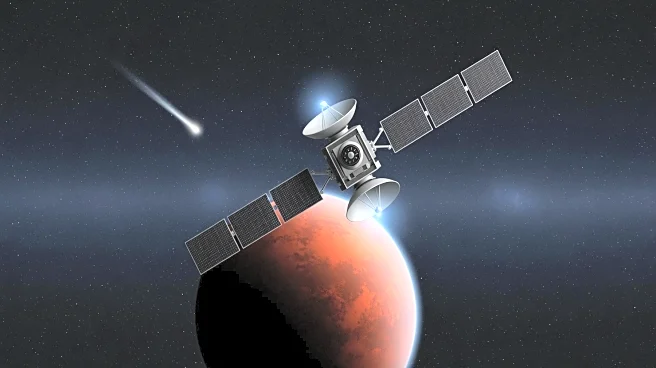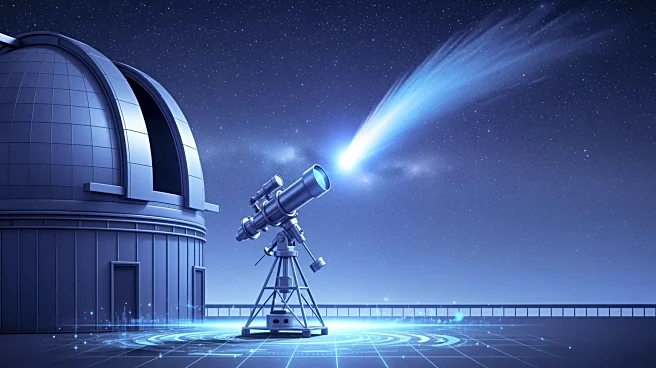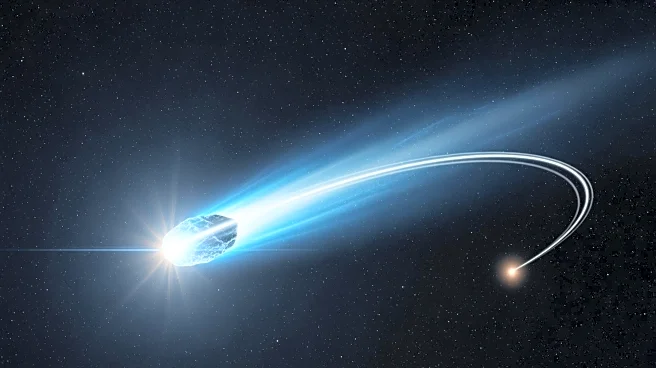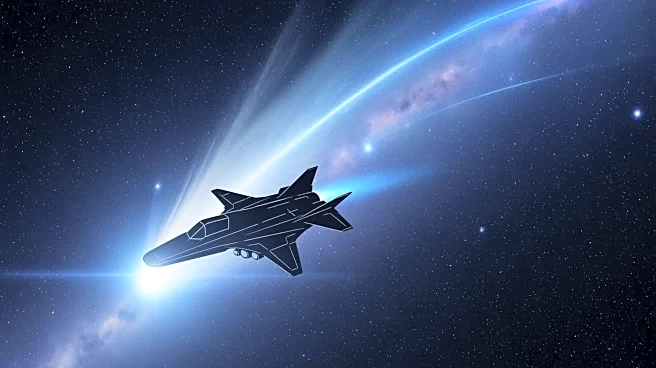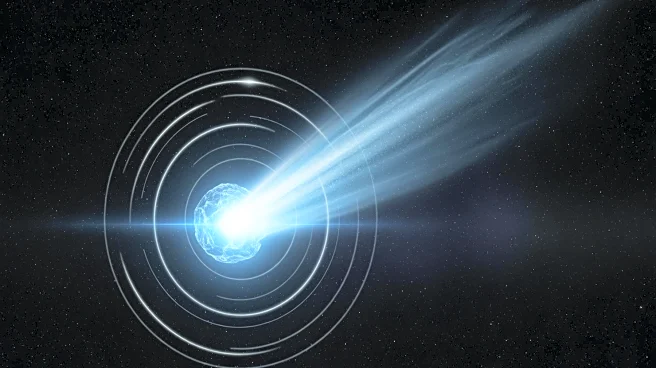What's Happening?
The European Space Agency (ESA) has conducted an unusual observation of comet 3I/ATLAS using data from the ExoMars Trace Gas Orbiter, marking a significant step in planetary defense efforts. The observation improved
the accuracy of the comet's predicted path by tenfold, providing valuable insights into its trajectory. This approach serves as a test case for monitoring asteroids and comets near Earth, even though 3I/ATLAS poses no threat. The collaboration with NASA and the use of Mars-based observations represent a leap forward in tracking interstellar objects.
Why It's Important?
The ability to accurately predict the paths of comets and asteroids is crucial for planetary defense, as it allows for timely warnings and potential mitigation strategies. This observation demonstrates the effectiveness of using space-based assets to enhance Earth-based tracking capabilities. By improving trajectory predictions, agencies can better prepare for potential threats and coordinate international efforts to protect the planet. The exercise also highlights the importance of collaboration between space agencies in addressing global challenges.
What's Next?
The ESA plans to continue observing comet 3I/ATLAS as it becomes visible from Earth again in December. The agency will use the data collected to refine its models and improve future predictions. The success of this test case may lead to more frequent use of space-based observations for planetary defense, potentially involving other missions and satellites. The ongoing study of the comet's coma and its changes over time will provide further insights into its composition and behavior.
Beyond the Headlines
This development underscores the growing importance of planetary defense as a field of study and the need for international cooperation in space exploration. The use of AI and advanced technology in tracking celestial objects reflects the increasing reliance on innovative solutions to address complex problems. As space agencies continue to develop new methods for monitoring and predicting the behavior of interstellar objects, the potential for discovering new scientific insights and improving global safety increases.
